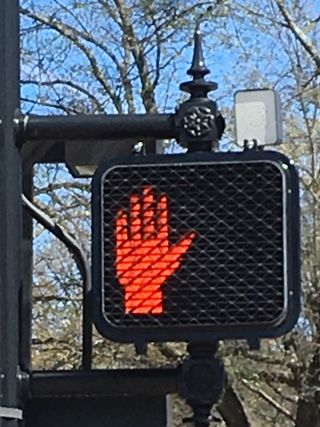Cognition
Walking Meetings? Proceed With Caution
A close look at recent studies says consider goals before you take the walk.
Posted March 13, 2017

If you work in an office of any size, you’ve heard about “walking meetings,” and probably even participated in a few. Instead of cramming into a small boring room, and sitting around a table or desk, you can take a walk together in the beautiful outdoors, with plenty of room to let your bodies and minds roam freely. And there are good reasons to meet that way, not the least of which is your health. The devastating health consequences of our sedentary lifestyles, filled with hours of sitting, have been widely publicized. There are also excellent research studies that show that walking boosts creativity, so walking meetings are likely to benefit collaborative performance if the goal is to come up with creative ideas. BUT, there are also findings from those same studies that show decreased performance on other types of tasks, and those findings have gotten less attention. So, let’s take a closer look.
First the good news. In the best known of the “walking” studies, Marily Oppezzo and Daniel Schwartz of Stanford University had people think up new uses for common objects while sitting at a desk or walking on a treadmill. Walking easily beat sitting on this Alternate Uses task. In fact, more than three fourths of the participants came up with more ideas while walking than sitting, and the average increase was a whopping 60 percent. Walking definitely improves this type of divergent thinking, a key ingredient of creativity.
So far, so good. If you’re brainstorming, and want to generate a lot of ideas, walking is a good bet. But, what about tasks that require convergent thinking, reaching consensus and finding the one best answer to a problem rather than many different possibilities? The same study shows that walking is bad for that type of thinking. One such task is Remote Associates where people have to think of the one word that forms a common pairing with three other words (e.g., given cottage, cake and Swiss, the one correct answer is cheese – cottage cheese, cheese cake and Swiss cheese). Now sitting wins. People performed significantly worse on this convergent task, coming up with fewer correct answers while walking than sitting. So, if your goal is to come to a resolution or consensus, sitting around a table in that cramped room might be the better choice.
Another study by Lorenza Colzato of Leiden University, Netherlands and colleagues Ayca Szapora, Justine Pannekoek, and Bernhard Hommel also showed that physical activity decreased both divergent and convergent thinking, The study was different in that people rode exercise bikes at moderate and intense levels rather than walking, and I have so far not seen any calls for biking meetings, but the decreased convergent performance adds to the concern that physical activity may be less desirable for meetings with convergent goals.
And finally, there is a study about the style of walking that is a little complicated but still relevant, so bear with me. Chun-Yu Kuo and Yei-Yu Yeh had undergraduate students from the National Taiwan University contemplate alternate uses for chopsticks while they walked the perimeter of a 400 x 500 meter rectangular area or wandered freely within the area. They all then had 10 minutes to list out uses, and the free walking group outperformed the rectangle walkers on the task. It is interesting that the different paths metaphorically link to free flowing versus rigid and linear thinking. The reason I emphasize this result is that well-intentioned advice to have a goal in mind for a walking meeting shouldn’t be construed as making a bee line straight to a fixed destination. A bit of meandering might be better.
Also in the Taiwan study a group of students who generated random paths with a laser pointer but didn’t walk them, and a group that followed those paths instead of generating their own did not show the same benefits as the free-walkers. The researchers suggested that an integration of the conceptual aspect of generating a free form path and the sensorimotor experience of moving along it is needed to improve divergent thinking. The implication is that if a strong leader sets the course and others just follow, the benefits of walking for the others might not be as great.
So if your collaborative goal is developing creative ideas, then a walking meeting could be helpful. But if convergence on a single consensus solution is more important, staying put could be the better option. You can always take a group walk in the sunshine afterwards to celebrate your convergent accomplishment!
Note: This piece was originally posted on My Personal Site about Creativity, I have also previously posted at Psychology Today about the individual angle on this walking research.
Copyright © Thomas Ward 2017
References
Colzato, L. S., Szapora, A., Pannekoek, J. N., & Hommel, B. (2013). The impact of physical exercise on convergent and divergent thinking. Frontiers in Human Neuroscience, 7
Kuo, C., & Yeh, Y. (2016). Sensorimotor-conceptual integration in free walking enhances divergent thinking for young and older adults. Frontiers in Psychology, 7
Oppezzo, M., & Schwartz, D. L. (2014). Give your ideas some legs: The positive effect of walking on creative thinking. Journal of Experimental Psychology: Learning, Memory, and Cognition, 40(4), 1142-1152.


